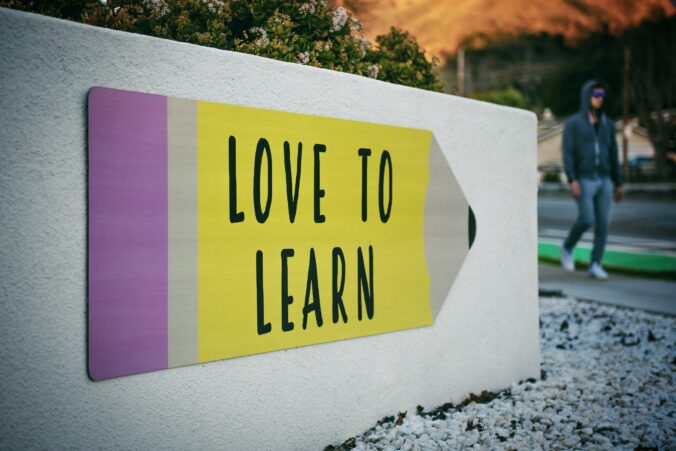Larissa your blog post provides such a clear and engaging explanation of Open Pedagogy and its potential. Your comparison between traditional teaching and Open Pedagogy highlights how transformative student-centred learning can be. I especially liked your discussion of “renewable assignments,” as it shows how learning can extend beyond the classroom and benefit the wider community. Your insights into OER’s role in biochemistry are particularly inspiring. The idea of sharing lab notes or study guides to build a collaborative learning network is powerful and relevant. It’s exciting to see how these practices can foster inclusivity and global collaboration in science.
Hanna, I really enjoyed reading your recent blog post about Open Pedagogy. Your description is really well written; it highlights how this practice can be transformational. You also firmly pointed out that students are co-producers in the process of learning, which means it encourages student empowerment and welcomes their involvement. I also liked your concept of OER as a tool for minimizing cost constraints. These resources are indeed as flexible and adaptive as would enhance and personalize the education to learners’ diverse needs. It was nice to read your discussion on the trends of OER, especially the aspect of its applicability in lower-income countries.
https://danasportfolio.opened.ca/
Hi Dana,
I appreciate your blog post, which captures the meaning of Open Pedagogy. You did a great job explaining the underlying aspects of working together and how OER can change education for the better. For me, the concept that students create knowledge alongside the teacher rather than receiving knowledge from the teacher is so exciting and actually, I totally agree. Another essential aspect that you mentioned is Creative Commons licensing – it makes people share responsibly and protects author’s rights which are extremely important to maintain this open education environment. One thing I find super interesting about your proposed global OER trends is the topic of inclusiveness. Culturally sensitive resources must meet the needs of learners with culturally related differences. Great insights!
AI and emerging technologies are reshaping education by fostering personalized learning, enhancing accessibility, and automating administrative tasks. Tools like adaptive learning platforms and predictive analytics enable tailored instruction and early identification of struggling students, improving engagement and efficiency. However, widespread adoption faces challenges such as high costs, insufficient infrastructure, and limited teacher training. Ethical concerns, including data privacy, academic integrity and bias, necessitate robust guidelines to ensure transparency and fairness. Looking ahead, innovations like AR/VR and blockchain promise immersive, secure, and inclusive learning environments, revolutionizing education over the next decade.
Natasha Berg has shared her experience and the concern of how AI like ChatGPT might benefit students, and why such an approach should not be prohibited in schools in her TEDx talk titled Should We Let Students Use ChatGPT?. In Berg’s opinion, the same can be said about blocking such tools – the students’ curiosity gets piqued, and they use the opportunities of the technology on their own. Instead, she raises the issue of how one should properly and effectively engage students with AI. Chat GPT and other AI tools can help in improving learning since such applications promotes creativity, effective thinking and participation among the learners. For instance, the students can write an imaginary history and discuss with a historical character virtually, or develop ai group project ideas. In return Education improves from AI time is saved on activities such as lesson planning, and content conversion for students with disabilities. Berg also points that the main issue concerns the transformation of educational practices. Instead of being standardized in the traditional way, every activator should be created supporting notions like teamwork, problem-solving, and application. This averts a situation where the students will perceive AI as a way of learning, or acquiring the knowledge, instead of a complement to learning. If AI technology is to be incorporated fully into the classroom, the teachers need to consider some of the issues such as privacy and fairness of the algorithm, apart from ensuring that the students understand the benefit, the discretion, and the intent of using AI in learning. The implementation of AI brings out the aspect of education through a technological based system, which would be practical as students join the workplaces with advanced technologies in practice.

Blog Post #4
Open Pedagogy and Open Educational Resources
I have come to understand how Open Pedagogy and especially OER differ from other forms of teaching and learning and how they make learning more open. Open Pedagogy thus focuses on active co-creation of knowledge between the teacher and students and as such, is diametrically opposite to the traditional model of instruction where the teacher is the exclusive knowledge prosumer. This approach empowers both parties: students work hard and come closer to the content and, at the same time, teachers help the students learn and navigate the resources independently.
The focus of this framework is to accommodate the use of OER as it shifts traditional education once more. As with any freely accessible content that may be used, adapted, and shared in pursuant to its license, OER removes barriers. They give learners a wide range of materials that allow addressing any issues of learning-teaching process. To educators, OER creates opportunity; it is easily editable, and resources may be tweaked to increase the fit to teaching environments. This flexibility plays a great role in equalizing the education sector by allowing creators of such learning materials to develop quality education content that should be attained by all without having to worry about their socio-economic status. Around the world, we witness significant trends within the use of OER. Many countries including the Canada have adopted OERs and encourage there use to improve access to education. But there are still obstacles such as financial for funding, lack of knowledge and personnel for training. However, these challenges create possibilities for the creation of efficient strategies for cooperation with teachers, schools, colleges, and governments to devise viable OER projects. Knowledge of how works under Creative Commons Licenses work is vital in this environment. These licenses help educators so that they can use, modify this content and disseminate it responsibly. For example, I can choose to license a content I developed through Creative Commons Attribution which allows the following and acknowledging the initial creator: THE WORK.
Finally, all the values of Open Pedagogy, such as collaboration, openness, and students’ engagement, have to become the principles of our work. The attitude that these principles create concerned the mustaquee decision to give equal importance to all the learners’ voices as having a ripple effect for enhancing the learners’ experience.
https://okmarsha.opened.ca/blog-2/
Building on your reflection on the networked pedagogy and digital learning, you can seen that you have maximally leveraged the benefits of the schemes like Reddit & linked in to enhance your learning and knowledge in the subject of Child and Youth Care or CYC. The time spent on these platforms provides a great example of how networked pedagogy works and how diverse opinions and collaboration enhances your personal development as a professional. You’ve engaged yourselves in a highly constructivist approach to learning where their classroom involvement involves seeking advice, giving feedback and sharing resources. It enriches you but at the same time benefits your co professionals as it enables growth and sharing of knowledge within a given disciplinary setting.
That is why the idea of cognitivism you mentioned is also important. In CYC where thinking critically and reflection is key, the application of cognitivism to online learning environments is revolutionary. Not only knowledge is activated through various quizzes and notes but the individual is also forced to interactively think through about the things done in the classroom or elsewhere. Besides turning reflections in to classmates and instructors, learners augment their group knowledge The viewpoints contained in the shares build an intellectual environment. This process resembles the process of networked pedagogy characterized by interaction in students’ learning process improving the learning journey.
I also fully agree with your focus on the instructor’s function as a creator of a welcoming and encouraging learning community. Teaching online, it is especially important for instructors to be both available and adaptable, not only in terms of availability but also in terms of the demands of student differ on classes. Providing options for students that might not work well in group can be admired as one of the flexible approaches. The best thing that any online instructor could do is not only share information but also ensure that student’s gender is not an issue to stop them from participating in the course.

Response to Ling Fangs Blog #2
This blog post offers a deep reflection on pedagogy, particularly in the context of online learning. It effectively combines personal experiences with educational theories like networked pedagogy and constructivism, providing a thoughtful exploration of how these methods enhance learning. The writing demonstrates a solid understanding of teaching and learning practices, connecting personal learning preferences to broader educational frameworks.
One strength is that the discussion of networked pedagogy is clear and highlights how social interaction and peer collaboration can enrich learning, while the emphasis on constructivism shows a preference for active, discovery-based learning. Additionally, the post does well in recognizing the importance of feedback in creating a strong teaching presence, especially in online settings where traditional cues are absent.
Overall, the post is well-written, insightful, and relatable.
Universal Design for Learning (UDL) is a research-based educational framework that aims to make learning accessible and effective for all students, regardless of their individual differences. Rooted in the belief that there’s no “one-size-fits-all” approach to education, UDL provides a set of principles for curriculum development that give all individuals equal opportunities to learn. It encourages flexibility in teaching methods, materials, and assessments to accommodate a wide range of learners, including those with disabilities, learning challenges, or unique preferences. The core principles of UDL focus on providing multiple means of engagement, representation, and action/expression to ensure that diverse learners are supported in the classroom.
Reflecting on UDL
In my view, UDL stands for Universal Design for Learning and its key principles are concerned with the aspects of diversity of learners. UDL encourages a shift from using teaching methods that narrow down students into groups where their results can all be grouped in the same category, to using instructional methods that enable the students to be learnt in different ways. Universal design for learning makes a learning-teaching process more comprehensive and friendly to students by offering various options of interacting with students, presenting knowledge, and evaluating outcomes.
This framework is particularly helpful for designing effective learning environment because it takes into account such diverse features as students’ abilities, background, learning styles etc. Instead of a One-Size-Fits-All approach of adapting instruction for students with disabilities only after a complaint was lodged, UDL offers solutions that assist all students right from the start. On this way, UDL is aimed at preventing the learning barriers and help every child to succeed in learning and unleash their potential.
Mechanisms Incorporated In My Own Learning To Ensure Accessibility
Through this lens, in my own learning or teaching experience I understood that accessibility is very important to offer equal chances of success to every learner. Of course, knowing that students can have various needs, teacher should ensure that those needs will be fulfilled in their class and it is my duty to do this. This include making materials available and receptive concerning the manner in which this material can be handled.
For instance, an adjustable e-book or captioned videos are helpful to a learner, which I am, and make a lot of difference in terms of how one apprehend the material being presented. It is great to have the flexibility of having the content readily available in more than one format as I learn better that way. It is my opinion that implementation of UDL and mindful of accessibility within and across learning spaces must ways contribute to a more effective learning experience for all students.
Consequently, Universal Design for Learning is a critical concept for the advancement of equality within the classroom. In thinking about UDL as a framework for classrooms, it becomes clear that this is useful for making teacher instruction more varied and accommodating to the specific needs of learners whether in the traditional physical classroom or through online platforms. The approaches being that for learners with special needs, as well as the use of modern tools in making content accessible, we can ensure that no learner is left behind, but each has a chance to excel.

Blog Post #2 – Pedagogy
Pedagogy is the practical practice of learning and knowledge, rooted in the analysis of how people learn and how this knowledge can be used to create purposeful and flexible learning processes. In addition to active learning, networked pedagogy strengthens student learning by connecting a number of nodes globally via the internet; my experience with online-based study groups has deepened my understanding and exposure to different methods of reciving information. One of the learning theories is constructivism which stresses more on the activities in the learning process. I think it works well in the online environment since students can work on the activities with feedback and reflection in real time. The presence of the instructor and the persona enacted in the online classroom must be managed in such a way that is conducive to acknowledging their essential functions of creating a learner-support community that benefits from the instructor’s characteristics, such as flexibility, understanding, and proactive communication skills. In my experience, it is still possible for an instructor to be responsive and give feedback in an asynchronous class. I think this course is an excellent example of this, as through the posted videos and material, our professor has made sure to let us know we are always welcome to reach out if we have any questions or concerns about assignments or readings. In particular, the digital environment can provide great versatility and company but, at the same time, educational difficulties, especially if online learners are not responsible for their time management. In order to contribute knowledge and ideas for the betterment of the collective, it is crucial to provide well-considered comments and frequently engage and self-engage in class activities groupwork or group discussions to help our understanding and contribution to the entire online community.

Peer Response #3 – Hanna Kim
This is my Peer Response to Hanna’s Introduction blog & first module post.
Hanna is in her second year of studying computer science. Something I found really cool is that she is involved with UVics’ Women in Engineering and Computer Science (WECS) organization. This group encouraged and influenced her decision to study Comp Sci. While computer science is something I definitely tend to avoid studying, I think it is so cool getting to take various elective courses where I ge to meet and interact with people who study vastly different fields. Hanna explains the subject of Open Learning, Distributed Learning, Modes of Learning, Digital Literacy, and Digital Identity. She did a great job of explaining a summarized version of what we learnt in Module #1



